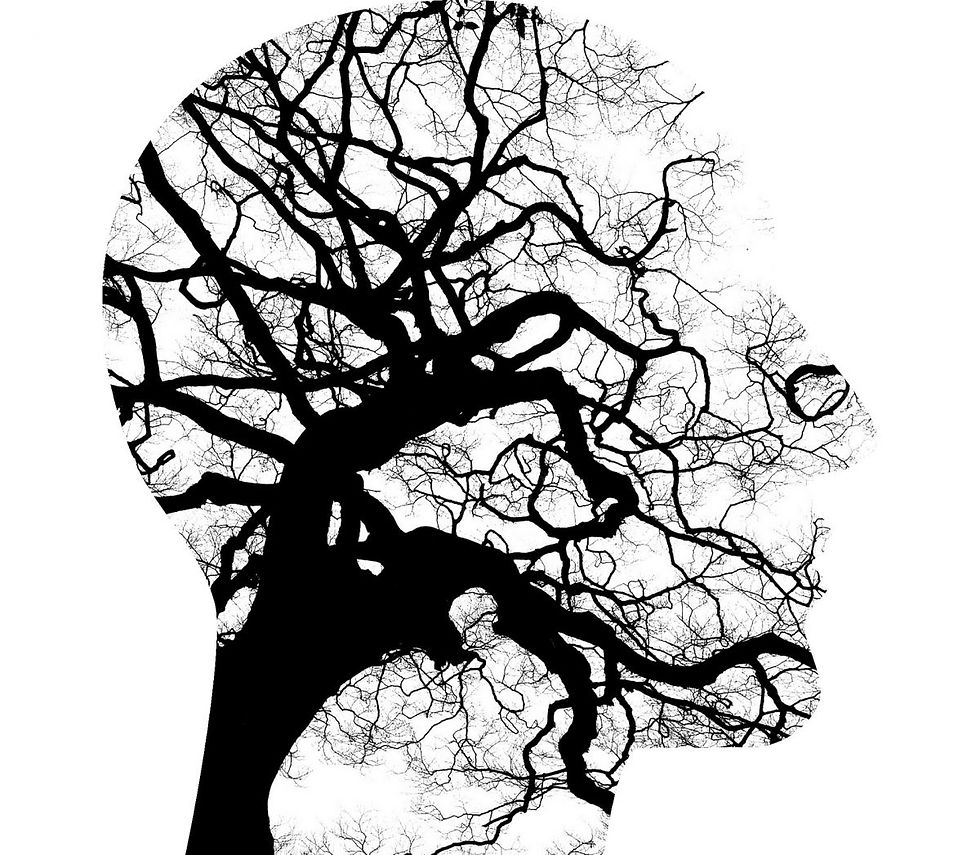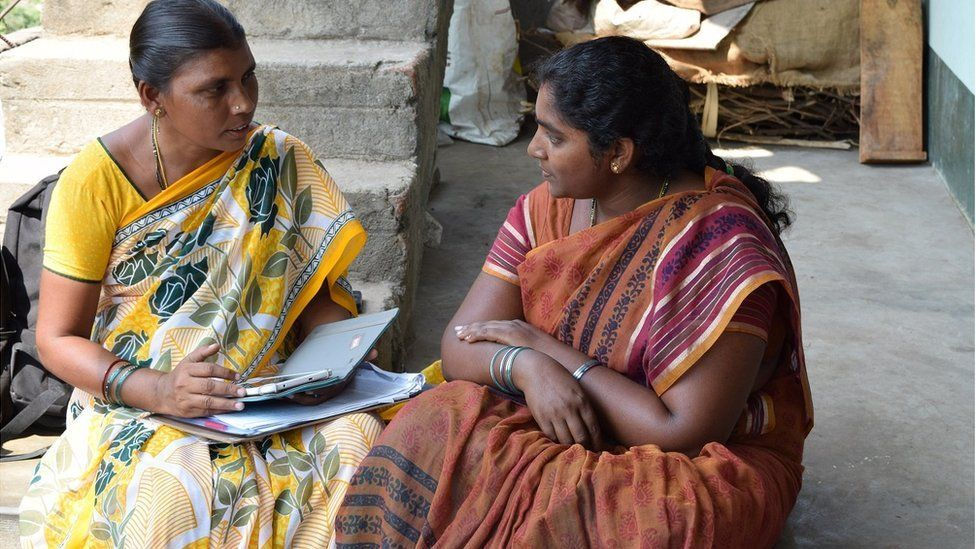Rural India's Mental health: Full of Despair and Oblivion
- Hindu College Gazette Web Team

- Feb 2, 2023
- 6 min read

Image Credits: PBS
India comprises 56 million people suffering from depression and about 38 million from anxiety disorders according to the World Health Organisation. It further states in the report that out of the 20 percent of the country's population who suffer from mental illness, only 12 per cent seek medical aid and those who do are more likely to be located in urban areas and are from privileged socioeconomic conditions. This article is an attempt to bring out the real horrific picture of mental health conditions in rural parts of India which suffers a high level of unawareness and deplorable mental public mental health care facilities.
Fortunately, those in metropolitan cities can access qualified psychologists, psychiatrists, and appropriate medicines and thanks to some level of online and offline social networks that greatly destigmatize mental health disorders. But the situation is very different in rural areas, as these privileges aren't readily accessible in the countryside. Most of them haven't even heard of the terms mental illness, depression and psychiatrist as such. They don’t even have the realisation that such illnesses exist. And it is also not surprising because people in rural areas with low literacy cannot diagnose that they have obsessive-compulsive disorders (OCDs), depression or anxiety, they treat them as phenomenally ill activity. For centuries mental illness in rural India has been associated with the supernatural. Many believe it is a result of black magic, divine attributes and demonic possessions.Stigma against mental illness is widespread ,all across the country and coercive belief is that mental illness is untreatable and seen as a sign of weakness. A family won’t be able to diagnose the illness due to a lack of knowledge about mental illness. As a result, very little mental health care is offered and patients are considered degenerate.
"Religious beliefs making a vicious circle of prolonged illness"
Religious belief and practices have dangerous consequences,People contact faith healers and in case of mental illness they rely upon them as they treat it as the effect of a bad spirit.The concept of healing is thus firmly rooted in a tradition where healing is not a separate medical domain but falls within the mystical-spiritual sphere, a phenomenon not only widespread in lndia ,but in many non-western cultures.The description of such temples makes it out to be an unusual place full of patients and their relatives who live on the premises for long periods of time. The most unusual behaviours are ignored and taken for granted. A significant feature is the presence of large number of women, mostly young who exhibit signs of hysterical behaviour. It is the women who have been especially selected for analysis as they represent to "accumulated and repressed rage of rural women".
The male patients usually suffer from the apprehensions of taking on responsibilities and a feeling of being alone. They show symptoms of shying away from growing up into responsible adults and may suffer breakdowns when asked to work or after getting married. "Whereas powerlessness is the social denominator of female hysteria - the demands of autonomous functioning and anxiety at the prospect of individuation seem to be the social correlates of male hysteria".

Image Credits: The George Institute for Global Health
They tie patients up and make them crazier and ruin them instead of treating them with medication. This makes diseases prolonged and causes vicious circles which lead to further depression where a person remains with no clue as to how to come out of it, their whole life starts revolving around their disease because they do not have any idea of a cure because they do not even know a disease like this also exists. Families of mentally ill patients don't care much as families of people with physical illness as they start considering the patient as a burden and cause of all problems. And the search for a cure in such clueless darkness results in the patient having suicidal thoughts and they show suicidal tendencies because they don’t remain with any hope that they will get cured. The saga continues and it takes 10 to 12 years or sometimes the whole life of patients to diagnose themselves with mental illness. Patients with severe symptoms when reached the brink come to institutionalise mental public health care.
Deplorable state of public mental health care
But mental public health care in India does not show much hope it intensifies the need to talk about the crisis of mental illness in rural areas. A horrifying scenario forms the backdrop to these dungeonesque places. Perhaps the most accurate indicator of how civilised a particular society is, is the way it treats its social ‘rejects’ - particularly those who have abandoned their grip on reality and threshold into the twilight world of mentally unbalanced.
But our institutions are showing deplorable sight, they are crawling with the sights and sounds of despair and madness, the sights of men and women living in conditions that are very worse, the smells of uncared for bodies living in shockingly maintained." Patients are not capable of worrying about their living conditions or their hygiene and clothing. They have no control over their bodily functions and clothing is often only an impediment to be torn off. A recent news report revealed the dire conditions of Government Mental health care centres where the living conditions of institutionalised patients were worse than in a prison cell. These public mental health care institutions are overcrowded and underfunded, less than one per cent of the Indian health budget is spent on mental health cases revealing also government reluctance to take the situation seriously. Most of these institutions were built during colonial times only and lacked renovation. Institutions show a helm of negligence and improper care. Confined to their private hells, they are a forgotten breed, abandoned by their families to rot in some institution where treatment and care often only add to their torment.
Overcrowding and confinement act as impediments to the recovery of persons and also serve a negative image among people which causes reluctance for treatment. Currently, there is no law or policy that regulates the happening inside these institutions, and many incidents of sexual abuse, overmedication, forced shock treatment and forced drugging are reported frequently.
In the case of women patients' situation is much worse, women with mental illness are treated as less than humans, and this attitude leads to a system rampant with abuse, this could be also because of our patriarchal society. For women it usually results in abandonment, their families don't take them home back. A report by Human Rights Watch has shown that they also face unsanitary conditions, are subject to treatment without consent and risk sexual and physical abuse.
"Way Ahead "
These are the worrying problems which are being neglected by both governments and civil societies but it is emerging as the biggest problem in rural areas with an increase in suicides, depression due to absurd poverty and unemployment after the covid pandemic. Government should think of some quick solutions for it. We need constructive public-private partnerships where access to mental health prevention and treatment is given to the rural population at a minimal cost as they cannot afford expensive private consultations and therapies which costs around Rs 1500 - 3000 per session.
Three tiers set up need to be established which can emphasise three pillars: care, treatment and rehabilitation. Public mental health care also needs to be improved and brought out of its deplorable state. India only has 3 centrally government-run psychiatry hospitals so we can imagine the overcrowding, the one at Ranchi famously known as Kanke which is the 2nd biggest in Asia receives daily up to 1000 patients from neighbouring states of Bihar, West Bengal, Meghalaya, Chhattisgarh and Odisha but suffers a lack of physicians and accommodation for such large number of patients. There are only 40 state government run and 3 central government-run institutions, which also lack an adequate number of doctors. Actually, the number of psychiatrists graduating per year is 700 and we have 0.75 psychiatrists per 1 lakh people which is not adequate as the minimum requirement is 3 per 1 lakh people. And there exists a severe lack of psychiatrists in rural parts of the country because no one is willing to work there.
Lastly, Social constructs on mental health, literacy and awareness need to be made at a fast pace to make people aware of symptoms of disease, to make them diagnose easily as disease and to familiarise themselves with their treatments. This can be only done when people will be convinced that mental illness is also a type of illness and it is curable. A constructive public-private partnership can help in its prevention and treatment and it can be tackled through information channels, through various online and offline platforms, which can help in familiarising people more with mental illness so that they can take treatment as early as possible. New government policies are picturing a ray of hope such as National Suicide Prevention Strategy. The strategy broadly seeks to establish effective surveillance mechanisms for suicide within the next three years, establish psychiatric outpatient departments that will provide suicide prevention services through the District Mental Health Programme in all districts within the next five years, and to integrate a mental well-being curriculum in all educational institutions within the next eight years. Government efforts and public awareness in the coming future can improve the situation, saving the lives of several people from despair.
By Vishal Kumar
Vishal Kumar is a second-year student of B.A Political science honours from Hindu College, DU. His interest lies in covering domestic Indian politics and political processes, examining the ground realities of Rural India and the problems faced by them.
References :
https://www.thehindu.com/sci-tech/health/addressing-mental-health-in-rural-india/article25352154.ece






Comments